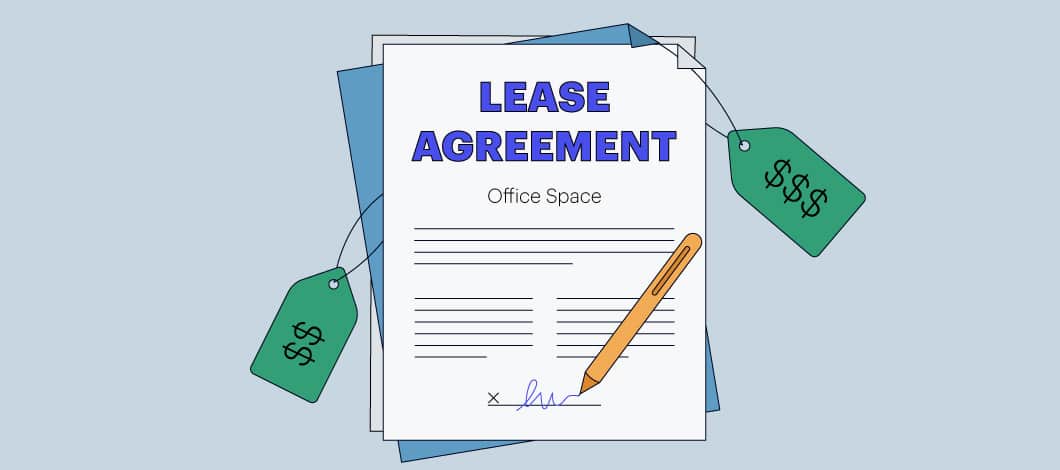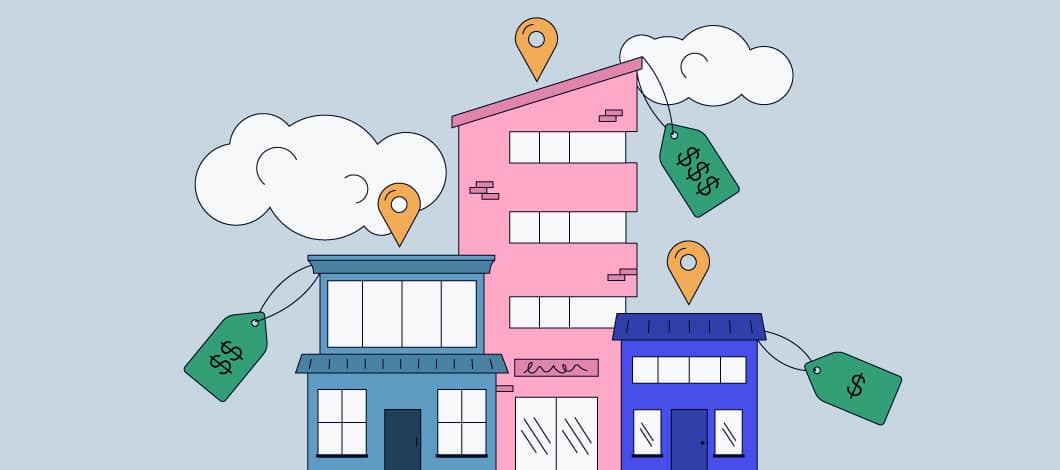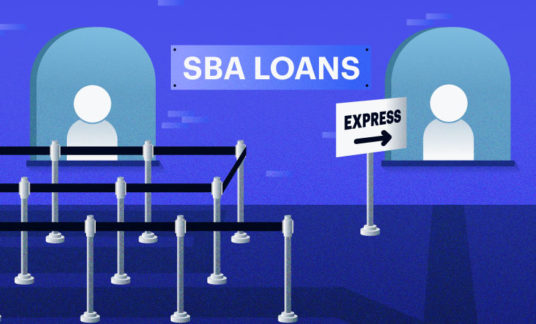Whether you’re starting out or expanding your small business, you’re going to need office space. The price of renting and the costs that are associated with leasing an office space might be intimidating, but we can help you estimate how much you can expect to pay and even reduce your costs.
Rental Office Space Cost Per Square Foot
Pricing depends on many factors, but the average rental office space cost per square foot you see could be anywhere from $5-$60.
That’s a wide range. Why?
The most notable factor is location. Big cities are hubs of economic activity and small business opportunity where property owners can charge up to 5 times the rent compared with their small-town counterparts.
Indeed, if you operate in or want to move to a big city to reach more customers, it’s crucial to understand office rental comes at a cost.
-
Office Space Costs by City
The city your business is located in will drastically change the average cost of renting an office space for your small business.
For example, setting up shop in a high-traffic area in Palo Alto, Calif., could cost you $120 a square foot each year, according to LoopNet, an online real-estate marketplace. Move a few miles down the road, however, and leasing a similarly sized building could cost less than half of that.
Big, competitive cities such as Washington, D.C., ($59.70), New York ($85.20) and San Francisco ($92.70) make up the high-end of the market per square foot yearly, according to commercial real-estate company SquareFoot. Other cities, such as Chicago ($33.90), are able to limit office-space costs.
What Goes Into the Cost of Renting an Office Space?
Average costs for renting a commercial office space vary greatly based on your location and the structure itself, among other variables:
Lease Contracts
The first thing to consider is what type of lease you and your landlord have agreed upon. This will affect what goes into your payments.
Here are 3 main types of lease contracts:
- Full service: Landlord pays for all expenses outside of rent
- Net: Tenant pays the rent and a portion of taxes, insurance and maintenance
- Triple net: Tenant pays the rent and all of the taxes, insurance and maintenance
The type of lease you have could make your rent rise significantly.
Base Rent
The main chunk of your monthly office rental costs will be the base rent. This number is calculated yearly by multiplying the value of the property by the square footage. Here’s an example:
-
$50 a square foot
1,200 square feet
$50 X 1,200 square feet = $60,000 per year
The value of the property goes up based on location, customer traffic and which class of office building it’s labeled as:
Class A
Generally, these are the newest, highest-quality buildings. Class-A structures are well-maintained and house high-profile tenants.
Class B
These are older Class-A buildings with the potential to be restored. Purpose-made Class B structures are explicitly built to provide quality office space at a lower price.
Class C
Class-C structures are older and in less-desirable areas that may require renovations. Some 10- to 15-year-old Class A and 5- to 10-year-old Class B structures can be listed and priced as Class C.
Common Area Maintenance
When you rent an office space, common area maintenance (CAM) costs may be rolled into your monthly payment. These are costs that the landlord incurs to take care of the property.
Some examples include maintenance of the parking lot, lighting and landscaping. They can be up to 30% of your total lease amount, depending on the building’s class and amenities.
Utilities
Don’t forget about the cost of water, gas and electricity. Unlike many residential lease agreements, commercial landlords generally don’t pay for any of the utilities.
With the cost of electricity alone for a small business being about $684 a month, forgetting to include the utilities when estimating your finances can leave you scrambling to cut the budget elsewhere.
Property Taxes and Insurance
Depending on your landlord and the type of lease you have, you could pay your portion—if in a shared space—or all of the property taxes and insurance on your office space.
These additional costs can amount to hundreds or thousands of dollars over time, so make sure you’re aware of how much they can impact your monthly payment.
Estimate Your Office Space Rental Budget
Before you go out and make any offers, you must figure out how much you should spend. Considering the money you make now, what you hope to make and your current and future needs can help you decide what property makes the most sense for your small business.
How Much Can You Afford?
The first step is calculating, realistically, what you can afford. You could find the perfect office space to rent, but will be jeopardizing your success if you can’t pay for it.
A general rule of thumb is to spend between 2%-20% of your revenue on rent, according to the Houston Chronicle. This can vary depending on your small business’s industry and unique situation, but try not to go any higher than that.
-
Small business tip: To find the right number for your revenue, look over financial documents such as your profit-and-loss statements and balance sheets. We recommend going back a few years if you can. If you’re just starting up, research your industry and location to give yourself the best estimate. Figure out your expected revenue to find a range of prices that work with what you can afford before evaluating what you want in a new space.
Limit Office Space Costs by Determining Your Needs
After setting a limit on what you can afford, you can save on office space costs by assessing what you need. The square footage, amenities and location you desire will drive the rental cost of office space.
Choosing the Right Size
Square footage is one of the biggest determining factors in your monthly rent. On average, you’ll want your small business office space to be about 125- to 225-square feet per employee, depending on your industry.
The number you come up with here will be how your rent is laid out when you negotiate a leasing agreement. For example, your potential landlord could set the rent at $50 per square foot.
Make sure not to get a space that’s too big or too small as you can cut into costs by finding the right office for your needs.
Layout and Amenities
Consider the office space’s layout, as well. If you need larger conference rooms, open floor plans for cubicles or dedicated work areas, you’ll have to find a place with the right dimensions.
If you’re a retail business with excess inventory, make sure to take into consideration whether there’s adequate storage space.
It might be easy to forget about parking and security, but they’re important as well. If you have a shared lot with other small businesses, consider how that’ll affect both your employees and customers. If there’s a shared or dedicated security system in place within the space itself, make sure you’re comfortable with it before trusting that your employees and equipment are safe.
Location, Location, Location
By now you know that the city you’re in plays a huge part in office rental costs, but there are other geographical factors that factor into what you pay.
Finding a high-traffic area can do wonders for bringing in customers. Areas with a high concentration of your target demographic and a low saturation of competitors are ideal but difficult to find. And you’ll pay a premium for that traffic.
Similarly, being close to busy roads and dense pedestrian areas will bloat rent prices. Conduct your market research and try to identify the optimal location for your small business.
Make sure to do your due diligence when trying to find a rental for your small business. Picture the right balance of size, amenities, location and price to narrow down your search.

Identify, Apply and Negotiate Your Office Rental Lease
Use what you now know about office rental costs and your needs to start your search. Online commercial real estate sites such as LoopNet and Showcase list thousands of available properties and are a good resource for your initial search.
Try to find the average office space rental costs for the size and area you would ideally like to be in. Identify properties on the high- and low-end of your price range and try to base your search somewhere in the middle.
It may turn out that you can afford to move downtown where there is a lot of consumer traffic for your small business. Remember to include room for business growth, but the added expense if the landlord requires you to sign a triple-net lease.
Other than negotiating terms for the average rent cost, landlords may try to include unexpected clauses that can prove costly down the road. Among other things, make sure to confirm if rent is subject to inflation, if you’re in charge of any maintenance and if you’re able to sublease the property if you need to move.











